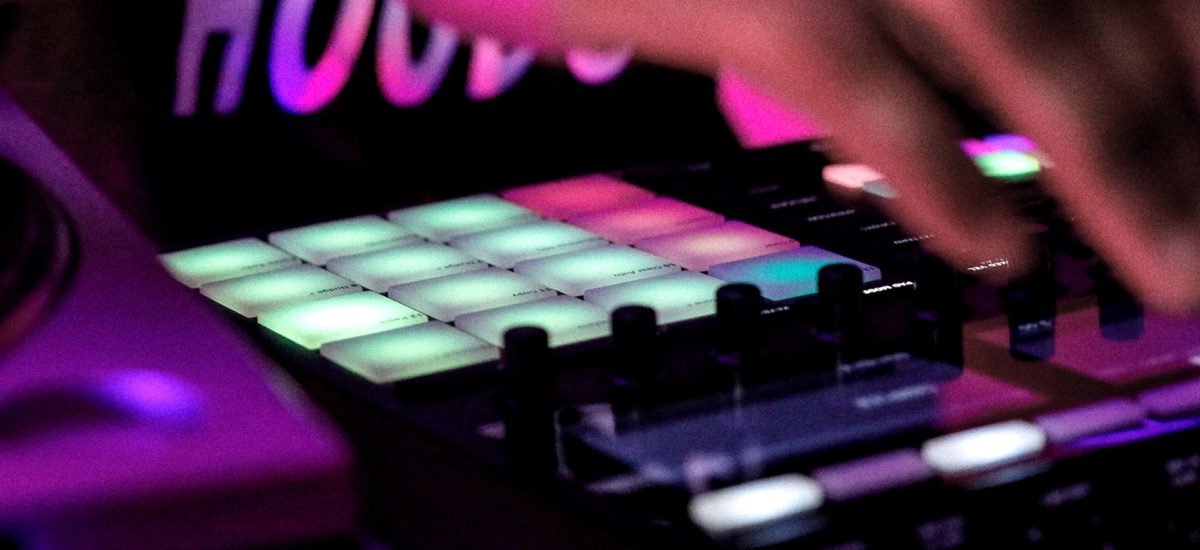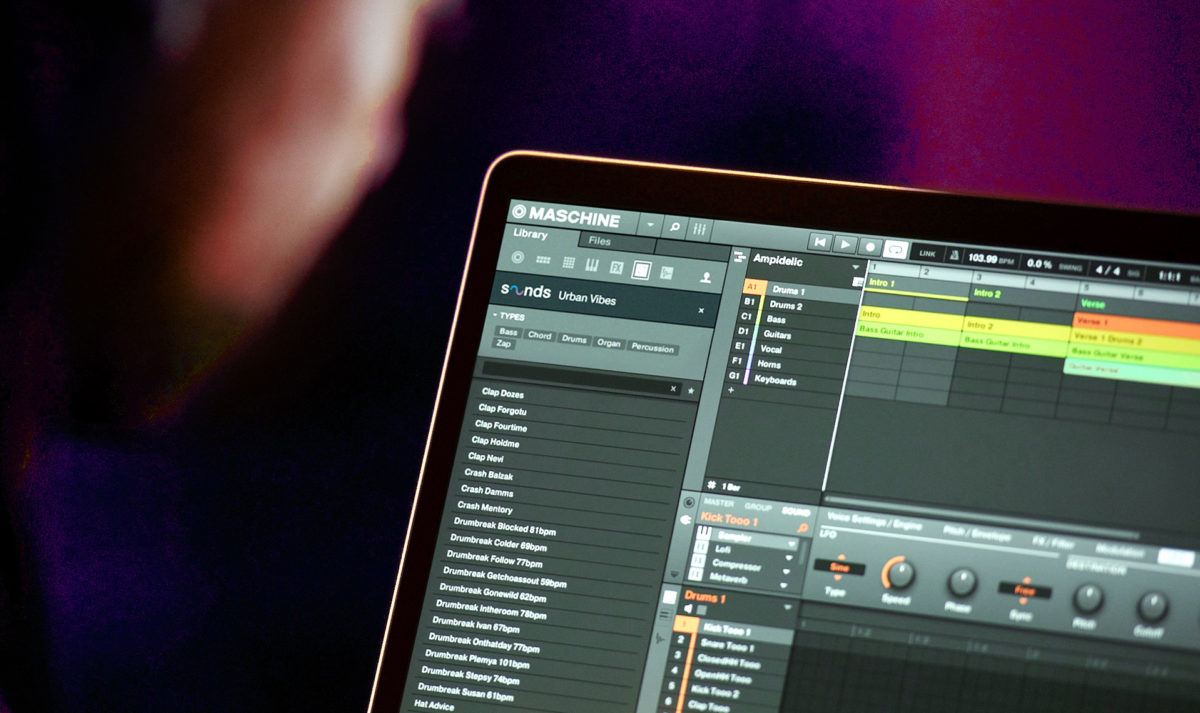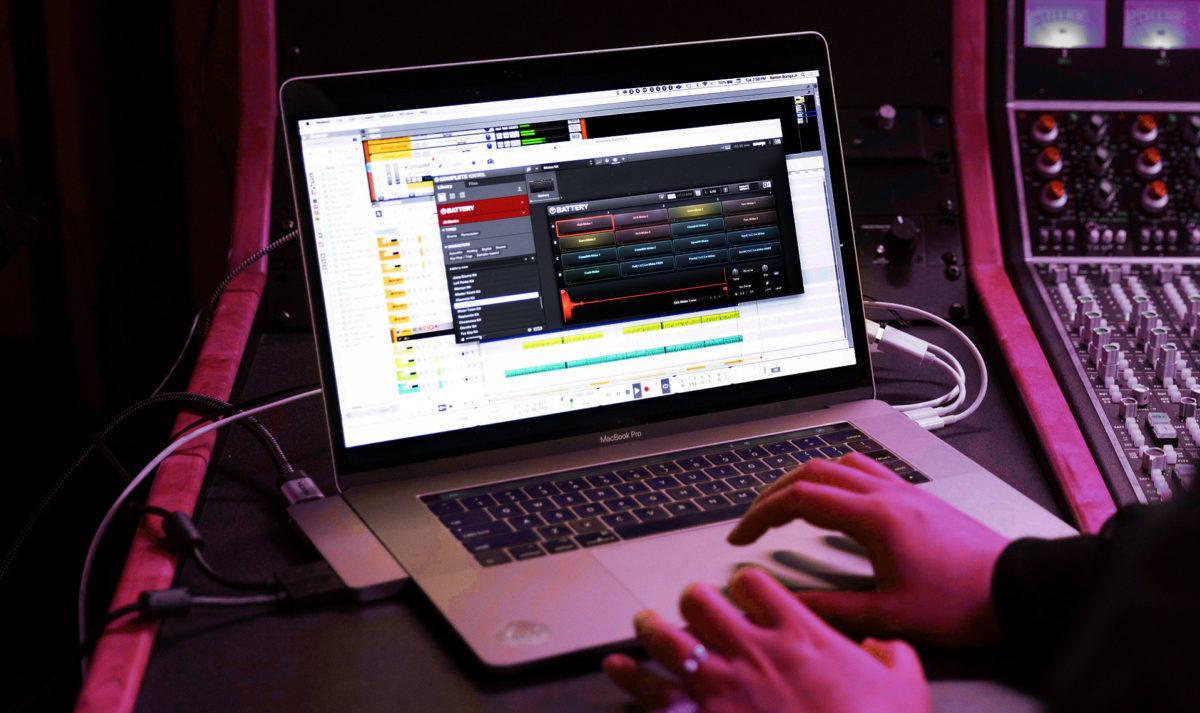
The beat is the main focal point of many contemporary styles of music. Placed front and center in the mix, it forms a foundation for melodies and other elements in a composition, providing meter and a sense of forward momentum. Over the last few decades, the rapid development of computers and diverse electronic instruments, as well as more accessible and widely available production tools, have ushered in the era of electronic music. This comprises all different types of beats, from the rigid four-to-the-floor pulse of house and techno, to swinging, groovy hip-hop beats, and frantic, lurching drum and bass. With these scenes came the democratization of the process of making music. Producers today have the equivalent of a full professional recording studio inside their laptops, and are no longer restricted by the expense or scarcity of physical gear. In addition, the electronic music revolution has brought with it an effectively limitless scope of new options and ideas for altering, sculpting, and inventing sounds by applying different effects.
There is a world of different effects out there, but they generally fit into a few main types, which we will explore below. Effects are used to manipulate audio signals at every stage of making music, from initial sound design, composing, and producing through to mixing and finally performance in live shows or DJ sets. Heavy use of an effect can act almost like an instrument itself, transforming the original, dry signal into an entirely new sound. On the other hand, more subtle application of effects can aid in the mixing and post-production processes, boosting and tightening up the key elements of a track while getting everything to blend nicely together in the overall mix. This article will run through the main categories of audio effects, touch on how they are integrated in various types of beats to create the signature sounds of different music genres, and offer some tips along the way for starting out learning how to make beats and music of your own.
First things first: what is a sound effect? The term has two different meanings in the world of audio. The first refers to short, sampled snippets of all sorts of everyday noises – from explosions to door slams, street ambience or the sound of falling rain – which are widely used in music as well as other media such as sound design for radio, film and TV. The other definition refers to effects units which are added to an existing sound to somehow modify or modulate the audio signal. So a music producer could add a sound effect to a sound effect, so to speak. As we explore how to enhance beats with effects, we will be looking more at the latter definition – effects as audio units applied to process sounds, rather than sound effects as a kind of sample.
The first effects units available to the masses, outside of an exclusive studio setting, were released around the 1940s. They came in the form of pedals or were built into amps, primarily for electric guitars. Sounds like fuzz distortion or wah-wah are ubiquitous to us now, but when innovative artists like Jimi Hendrix were picking up these units and experimenting with new guitar tones, beats, and sound effects, the results were truly unprecedented. In fact, they completely reshaped people’s expectations and assumptions about what music is and what it could be. Indeed, there was much robust debate about whether these brasher, more noisy sounds were even music at all, as certain key musical pioneers pushed the boundaries and invented new styles, the sounds of the future.
As technology developed further and personal computers became more common and affordable, software effects plug-ins were soon to follow. This was a game changer, as it gave producers access to vastly more creative possibilities, with less-complicated integration into projects as well as greater accessibility and affordability to try out different sounds. These days, the internet is inundated with software effects of all different kinds from different manufacturers, ranging from simple, freely available units to huge, complex, professional-grade effects. A lot of modern plug-ins try to recreate the vintage warmth and character of the hardware units from years gone by, often getting pretty close to the original tone, but of course with a far less intimidating price tag.

Different Sound Effects for Beats
Now let’s run through some of the main sound effects for beats and music production, starting with echo and delay. An echo is an acoustic phenomenon in which a sound reflects off a hard surface and returns to the listener after a gap of time. This natural occurrence is reproduced in delay effects, in which an input signal is stored and replayed. The time delay can be anything from small fractions of a second to longer intervals of multiple seconds, and the effect can vary from a single repetition, as in slap-back delay, to a longer, repeating echo with a slowly decaying audio tail. In fact, a long-enough delay effect can even create a feedback loop that will continue infinitely.
Longer delay and echo effects create a spacey, otherworldly atmosphere. They can also be used to fill out rhythms and add energy in a beat. For example, imagine a simple percussion pattern or melodic line; by blending the dry and wet signals, you can create more complex, unpredictable patterns fairly quickly and easily. Most modern delay and echo effects are able to be synced or quantized to the project tempo in your DAW, meaning the wet signal is precisely matched to the metronome beat or fractions thereof. However, switching this feature off can help you attain looser, more organic, or vintage-sounding results. Echo effects often intersect with other techniques, as in the case of ping-pong delay, where the left and right channels are panned apart and set at different time intervals so the echo seems to bounce across the stereo field.
Reverb is a widely used effect that is related to echo and delay. Reverberation is essentially a multitude of echos occurring at once, and refers to how sounds are affected by physical spaces. Just think of how sound behaves differently in a large, reflective hall such as a cathedral, compared to a smaller room with more soft textures around to absorb and deaden the sound reflections. Olden-times composers of choral music for the church no doubt had this natural reverb effect in mind as they wrote and performed their music. Modern reverb units can recreate the depth and reflectiveness of different sizes and shapes of spaces, essentially emulating how the input signal would sound if it was placed in different types of room or space. Reverb can be used in production to draw out and sustain sounds, add presence to a mix, or smooth out little details and imperfections in the dry signal.
Adding saturation or distortion to drum hits and instruments can really beef up a sound and help it cut through the mix with more impact. Distortion effects involve pushing an audio signal up beyond the maximum point where it sounds clean, so it begins to ‘clip’. This basically means the ends of peaks and troughs in the waveform are chopped off, so some detail is lost, but the overall effect is a thicker, compressed sound with a nice, warm crunch. Distortion effects were originally developed for use with electric guitars, and popularized in the heavy rock and punk scenes, before being adapted and applied to synthesizers and electronic beats.
Often in the mixing process, distortion is an unintentional and unwanted byproduct; care is taken to leave enough headroom in each track to avoid clipping, and not to run any part of the signal chain so ‘hot’ that it starts to distort. That said, deliberate and controlled use of distortion can be highly effective and sound massive, as distortion adds harmonic overtones which can help fill out a thin tone. Milder use of distortion and saturation plug-ins add presence to a sound by giving it a nice buzz. Pushed to the extreme, however, distortion effects can achieve some blistering, ear-splitting sonics that almost push the music into the realm of post-modern deconstruction. This can be heard at the harder, harsher end of techno and industrial music, as well as many modern hip-hop and trap beats.
To add a shimmer to your beats, try experimenting with a chorus or phaser effect. At its most basic, chorus simply means a group of similar sounds that are perceived together as one, as in the case of instrument sections playing the same parts in an orchestra. As an electronic effect, chorus means the dry signal is doubled up with a slightly delayed copy of itself, so that as the dry and wet signals overlap, the interference produces a phasing effect and a wider, slightly detuned sound. Flanger and phaser plug-ins follow the same principle as chorus but with more intensity. The phasing of the signals is modulated with a moving LFO that makes big sweeps up and down the frequency bands. The resulting sounds are more warped and otherworldly than a simple chorus. Tremolo varies the volume level of the dry signal instead, which leads to a wobbling or rippling underwater effect.
How to apply effects is essentially up to you, and will depend on the type of beat or sound you’re working on. There are practically unlimited options for experimentation with different audio units and improving your beats with sound effects. Thanks to modern technology, most DAWs come with racks of effects units included, and other software collections such as KOMPLETE offer professional-grade effects that don’t break the bank.

How to Make Music Digitally
These days, producers can make all types of beats at home without a professional studio or loads of expensive outboard equipment. It’s hard for us to imagine life in the not-too-distant past without computers or infinite resources online, but we should be thankful for the easy access we have now. Modern DAWs make it possible to create and mix full tracks ‘in the box’, with software instruments, samplers, and effects plug-ins at the fingertips of every budding bedroom producer.
Playing around with effects can be great for coming up with ideas and finding inspiration at the start of a project. Quickly throwing a reverb on a beat gives it a sense of real, dynamic space, while an echo effect can add motion to the rhythm, and distortion can immediately boost the tone of a sound (or tear it to shreds). Add a good old filter sweep to emphasize a big, building crescendo. Or, to bring things back around to the other definition of sound effects for beats, introduce some background ambience or analog hiss to the mix to help things feel more rounded and substantial.
Effects are also invaluable at the mixing stage. Making use of stereo panning can help to create space for each element to sit in a nice balance. Noise gates are incredibly useful for pinpointing and isolating the desired elements from sampled audio and cutting out the rest. Similarly, high-pass and low-pass filters and EQing allow you to clean up sounds and give the main frequencies a boost. Software samplers like BATTERY make it really easy to set up multiple outputs within your DAW, so each element in the beat can be processed individually. Alternatively, group similar sounds in bus channels and add effects to them in blocks to help blend them together.
At the end of the process, you’re surely going to want to play your beats out in a set. Many modern DJ mixers and controllers come with a host of audio effects included, from filters and bit-crushers to beat-repeat and hot cues for chopping up tracks on the fly. Digital DJing is easier than ever, with TRAKTOR and other DJ software boasting a selection of deck and mixer effects that allow you to customize and blend your beats in real time. As we have seen, effects play a vital role in coloring and sculpting sounds at every stage of producing and performing electronic music. So get exploring, experimenting, and enhancing your music beats with effects in all different shades.















